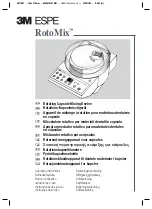
2-13
CAUTION
A capacity load may be carried on the boom, or a capacity load may be carried on
the deck, but not at the same time. The total of the percent of deck load and the
percent of boom load must not exceed 100%. For example, if the boom load is
100% of its capacity at its current load radius, the deck load capacity is 0%. If the
boom load is 60% of the load rating for its load radius, the deck load capacity is
40% of maximum.
CAUTION
The capacities of this crane are based on all outriggers being FULLY EXTENDED
to a FIRM, LEVEL surface. The crane may tip at less than capacity loads if
operated in the following manner:
A. Outriggers only partially extended and resting on curbing, shoring, etc. If the
outriggers are not all the way DOWN, they are not all the way OUT.
B. Outriggers extended to a surface that appears to be firm, but is unable to support
the outrigger pad at full rated loads. Examples of this type surface are:
1.
Thin or cracked blacktop or concrete.
2.
Dirt that appears dry and firm on top, but is moist or unpacked beneath
the surface.
3.
Dirt with a frozen but thin crust.
C. Crane operated on a hill or slopping surface. Crane can tip at less than rated
capacity when load is lifted on downhill side.
CAPACITY EXAMPLE (See 7 foot (2.1 m) Jib Capacity Example Page 2-17)
Refer to the IC-20-1J capacity chart on the preceding page. A load that is 4 feet (1.2m)
wide and weighs 2800 pounds (1270 kg) is to be lifted from the side and loaded onto the
deck of the crane for transport to a new location. We see on the chart that 2500 pounds
(1135 kg) is the maximum load on one-part line, so the sheave block is required. The
charts show the weight of the standard sheave block to be 45 pounds (20 kg). The
rigger says that two slings are required, weighing a total of 40 pounds (18 kg). The total
load is 2800 (1270 kg)+45 (20 kg) +40 (18 kg)=2885 lbs (1309 kg). A 6 foot (1.8 m) load
radius is required to clear the side of the crane.
Looking at the "Left Side, ON RUBBER" column we see that the load is too large and
heavy for this condition. This leaves the "ON OUTRIGGERS" column. The outriggers
should always be used whenever possible anyway. We see that we can lift up to 3300
pounds (1370 kg) at a 6 foot (2.0 m) load radius, either over the front or over the side.
Checking the chart again, we see that the load is within the deck load limit of 5,000
pounds (2270 kg) and that the travel speed with the load must be limited to 3 mph (5
km/h) -- or less if conditions dictate.
REMEMBER THAT AS THE BOOM IS LOADED, DEFLECTION OF THE BOOM,
TIRES, ETC., WILL INCREASE THE LOAD RADIUS. SO BE CONSERVATIVE IN
YOUR CAPACITY ESTIMATE.
Summary of Contents for IC-20-1J
Page 6: ...1 2 DIMENSIONS AND ORIENTATION IC 20 1J Courtesy of Crane Market...
Page 7: ...1 3 TURNING DIMENSIONS Courtesy of Crane Market...
Page 25: ...2 11 Courtesy of Crane Market...
Page 26: ...2 12 Courtesy of Crane Market...
Page 36: ...Courtesy of Crane Market...
Page 44: ...3 8 IC 20 LUBRICATION CHART Courtesy of Crane Market...
Page 48: ...3 12 JIC SCHEMATIC Courtesy of Crane Market...
Page 50: ...3 14 STEERING SYSTEM Courtesy of Crane Market...
Page 52: ...3 16 IC 20 PROPULSION SYSTEM Courtesy of Crane Market...
Page 62: ...Courtesy of Crane Market...
Page 63: ...Powered by TCPDF www tcpdf org Courtesy of Crane Market...
















































